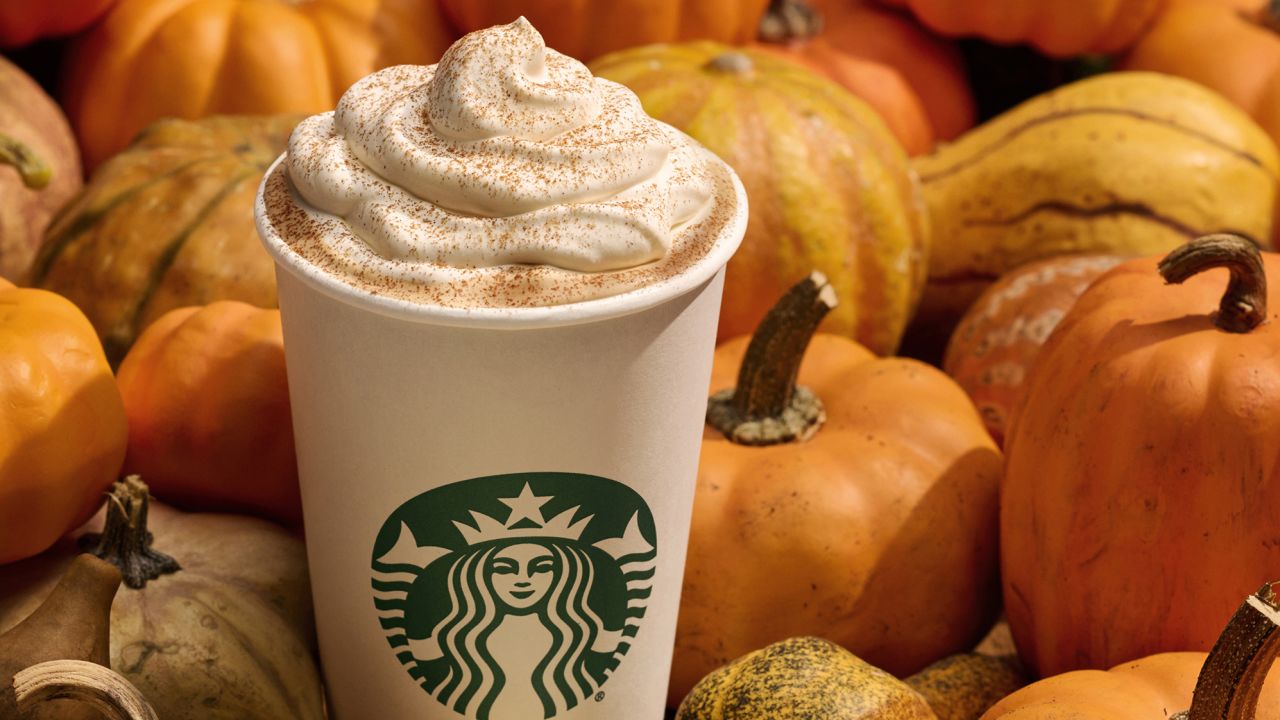Starbucks announced that the popular Pumpkin Spice Latte is officially coming back today, August 25, for its earliest recorded release day ever!
The drink is back for its 17th year (!!!) and as always you can get it hot, iced, or blended.

Starbuck’s Grande Pumpkin Spice Latte with 2 percent milk and whipped cream is 380 calories, according to Starbucks’ website. This includes 14 grams of fat, 52 grams of carbs and 50 grams of sugar.
The Food and Drug Administration (FDA) recommends eating no more than 12.5 teaspoons of sugar each day, or about 50 grams (the same amount found in a Grande Pumpkin Spice Latte and a 16 oz. bottle of Coke!). You are having a day’s worth of sugar in one drink!
The idea is to limit sugar consumption to 10 percent of a person’s daily total calories. Currently, Americans get about 16 percent of their calories from added sugars on average.
Over time, consistently taking in more sugar will lead to insulin resistance. Insulin resistance is when cells in your muscles, fat, and liver don’t respond well to insulin and can’t easily take up glucose from your blood, leading to prediabetes.
Prediabetes means your blood glucose levels are higher than normal but not high enough to be diagnosed as diabetes.
A new report from the Center for Disease Control and Prevention shows that among Americans age 20 and older, as many as 73 million Americans have prediabetes, which is about 1 in 3 Americans! That’s a lot of missed opportunities to prevent diabetes by cutting down on sugar intake.
Help Us Light the Way During National Diabetes Awareness Month (November)
Approximately 96 million American adults—more than 1 in 3—have prediabetes. Did you know that over 80% don’t know they have it? Prediabetes increases your risk of developing type 2 diabetes, heart disease, and stroke.

This November, join Divabetic’s Blue Candle initiative and encourage your friends, co-workers, and family members to be screened for pre-diabetes. The Centers for Disease Control (CDC) offers a quick, easy online Pre-Diabetes risk test.
Prediabetes Risk Test
Be by their side when they check, and share your experience of living well with diabetes so they can see that living well with diabetes is possible. Together, we can help others come out of the dark, address their diabetes health status, and start living their lives to the fullest.

There’s a good indication that murder might be part of the recipe when Nantucket’s ten-time reigning Baking Champion’s last name is ‘Coffin’ in Divabetic’s Mystery Podcast, Kill Me Madam
But resentment, greed, and Britannia’s bad dealings turn everyone into a suspect when she’s found dead in the parking lot just before the Annual Decadents on Deck! Bake Off competition is about to kick off.
Delusional baker and amateur sleuth Mr. Divabetic is even shocked to find himself being treated as a suspect in the case by the local police after meeting her just once!
As if his life wasn’t crazy enough before, escaping a murderous mishap in New York and attempting a fresh start in Nantucket has turned into a complete and utter baking disaster. Now Max, along with his friends and nosy mother, have to add tracking down a murderer to his To-Do list, too.
Can our team hunt down the real murderer before they strike again? Will he become the next victim? Can Max ever manage to bake a cake that’s actually edible?
Divabetic’s Mystery podcast cast includes Tonya Kappes, Patricia Addie-Gentle RN, CDE, MaryAnn Horst-Nicolay MEd, NDRT, Lorraine Brooks, Catherine Schuller, Wendy Radford, Trisha Artman, Mama Rose Marie, Seveda Williams, and Max ‘Mr. Divabetic’ Szadek. Produced by Leisa Chester-Weir.
Throughout the podcast, we will feature music from the Broadway Cast Album of ‘Call Me Madam’ courtesy of SONY Music.






